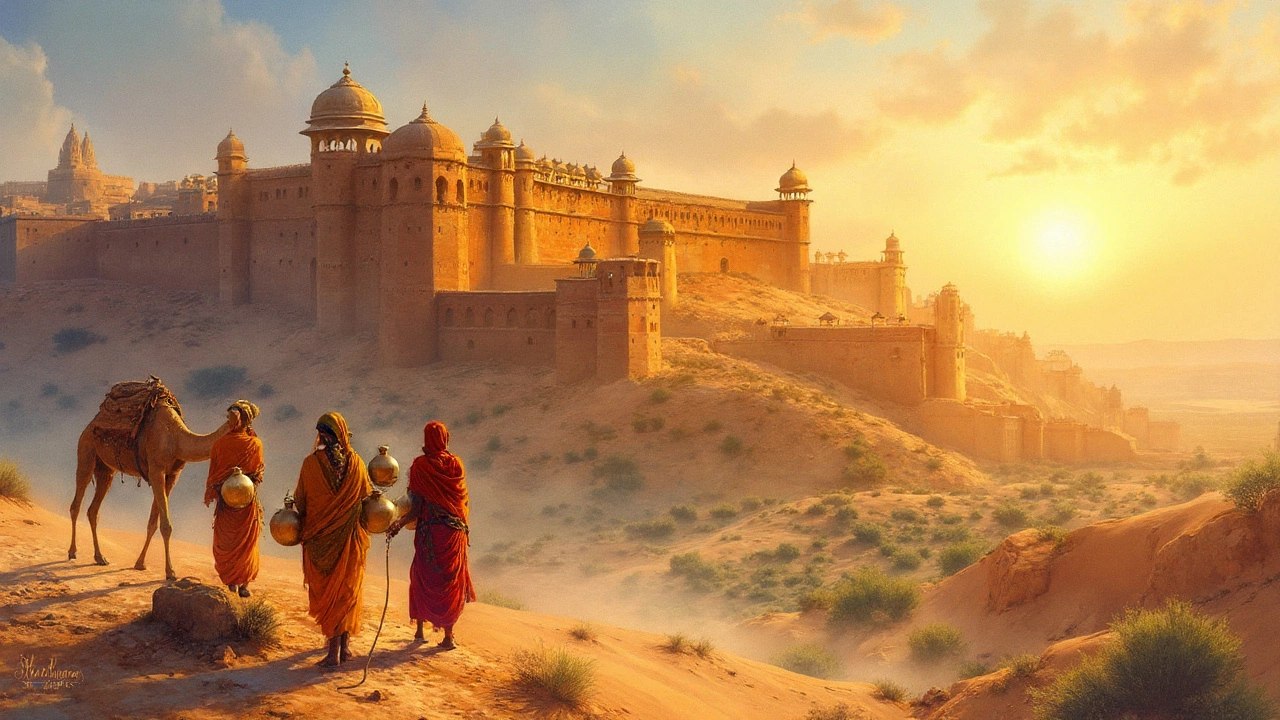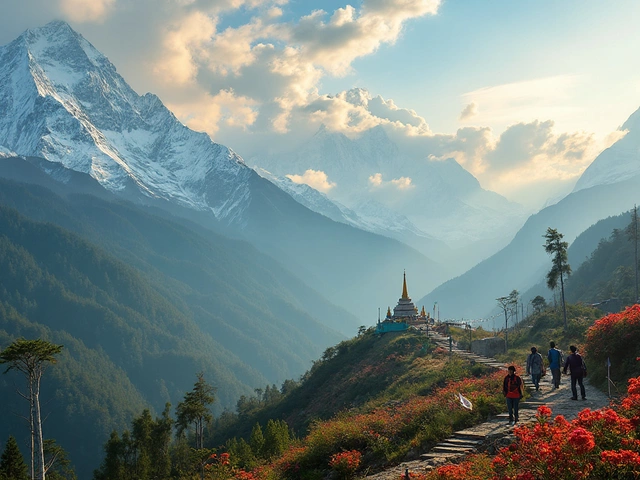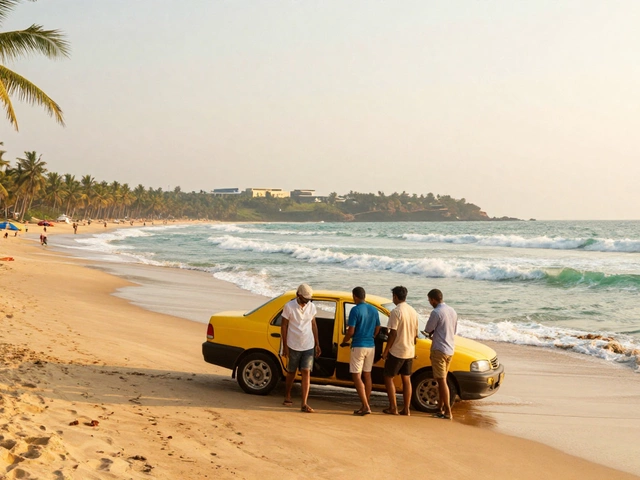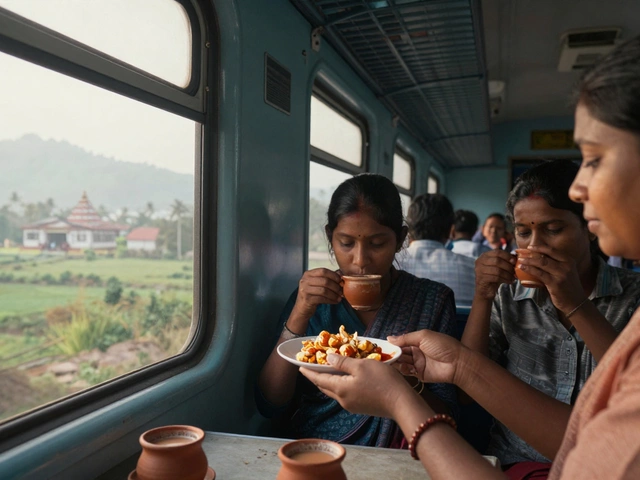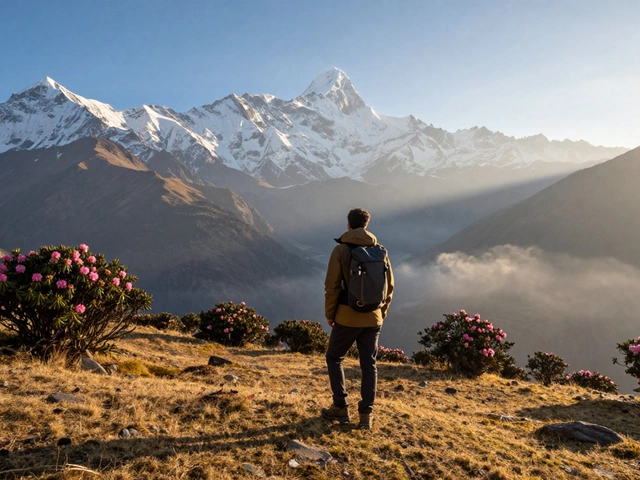Strange how one city can look like it’s been dusted in gold. Jaisalmer, the shimmering desert citadel, almost seems unreal at first glance. Rising from the heart of the Thar Desert like a mirage, it isn't just another historic stop in Rajasthan—it’s a living, breathing golden tapestry, stitched together with tales of merchant princes, camels, and endless dunes. If you’ve ever wondered why it's called the “Golden City of India,” just stand under the midday sun and watch how the honeyed sandstone walls glow, magically lighting up the desert around. No filters or editing tricks—just pure old-world magic. But there’s much more to Jaisalmer than its outward sparkle.
Why Jaisalmer is Called the Golden City
Not every nickname is earned as honestly as Jaisalmer's. Here, the local buildings—homes, havelis, palaces, even humble shops—are carved out of yellow sandstone. The color blends perfectly with the desert sand, and when the sunlight hits, the city comes alive in shades of gold. Think of it as nature’s Instagram filter, but authentic and thousands of years old.
The origins of Jaisalmer stretch back to 1156 AD, when Rawal Jaisal, a Rajput ruler, founded the city. He chose the hilltop because it looked like the perfect defense outpost in the otherwise flat, sweeping desert. What he probably didn’t plan? How beautiful it would look centuries later. Today, the old fort stands atop the throne-like Trikuta Hill, watching over a labyrinth of winding streets, colorful bazaars, and ancient Jain temples. Every inch radiates a golden glow, which isn’t just pretty—it’s practical. The sandstone keeps the homes cool in the brutal desert heat. Clever, right?
Local stone carvers helped turn simple blocks into lacy facades and intricate windows called jali. Evenings here are unforgettable; as the sun sets, the city seems to melt into the desert, with each wall reflecting warm, caramel hues. And the magic’s not limited to daytime: under the moon, the same stones look silvery and mysterious.
This consistent color palette isn’t just for aesthetics. For centuries, local craftsmen prided themselves on blending their work with the land. Their motto seemed to be: "Build, but don’t break the spell." Wander Jaisalmer for a day, and you’ll see just how well they succeeded. And heads up: the city isn’t just a monument frozen in time—the fort is actually lived in, with more than 4000 people calling it home. That makes it one of the oldest continuously inhabited forts in the world.
This UNESCO-recognized wonder is not just a relic. Life buzzes behind every ancient wall. You'll hear children’s laughter, see clothes flapping in sunlit courtyards, and smell fresh kachoris in cramped lanes. “Jaisalmer isn’t just about looking—it’s about living,” says Indian historian Rana Safvi.
“Nowhere else does the past seem so close or so golden.”It's not just the walls. Legends, family businesses, recipes, and even camel stories are passed down right here, as golden as ever.
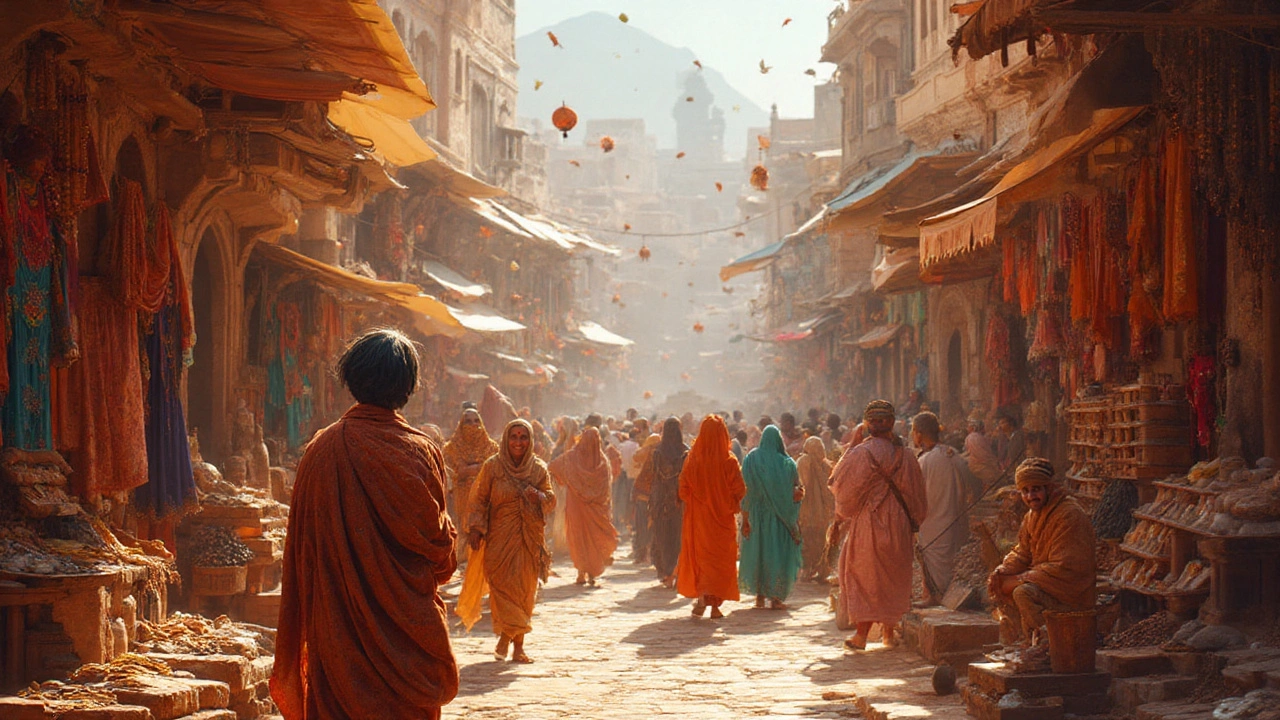
Legends, Forts, and Local Life: The Heart of the Golden City
There’s no skipping the centerpiece of Jaisalmer—the fort itself, known as Sonar Qila (Golden Fort). From a distance, this fortress looks like a giant sandcastle that some whimsical child (with exceptional engineering skills) left behind. Its 99 bastions have watched centuries of traders, invaders, and families come and go. Within its winding lanes, you’ll find houses, temples, guesthouses, and shops, all squeezed together like puzzle pieces.
A visit to the Jaisalmer Fort isn’t just about gawping at history—it’s about living it. Residents joke that you won’t need Google Maps; you’ll just have to follow the smell of fried sweets or listen for the clang of a jeweler’s hammer. The fort is actually a microcosm of the city—a little world within walls. Got a sweet tooth? Sample ghewar from a local bakery or try mirchi vada if you’re feeling brave.
History buffs will find themselves in paradise—with a twist. Most believe the fort has seen at least three full-scale wars (known locally as sieges) and has witnessed thousands of camels tramping through its gates. Many of the fort’s havelis (mansions) were built by wealthy merchants, who belonged to trade guilds that specialized in spices, silk, and precious stones. These havelis are not just houses; they’re carved stories, each with latticed windows, secret courtyards, and marble fountains. Kothari Patwa Haveli and Salim Singh ki Haveli are must-sees if you’re geeky about architectural detail, or if you love peering into rooms frozen in time.
Religious life here pulses quietly but powerfully. The Jain temples inside the fort are carved like wedding cakes—multiple stories of sculpted pillars, labyrinthine corridors, and marble deities. Dedicated to Tirthankaras (spiritual teachers), these temples often see both pilgrims and curious visitors who wander in, cameras in hand, but leave feeling oddly peaceful.
Want a taste of real life? Step outside the fort and wander the bustling bazaars. Sadar Bazaar and Bhatia Bazaar buzz with color and sound. Here’s where you find handmade leather goods, patchwork quilts, and silver jewelry that’s locally crafted. Haggling is almost a sport here—don’t be shy. Vendors love it more than you’d think, and you might walk away with a true treasure instead of a touristy trinket.
Jaisalmer isn’t just about what’s ancient, though. Spend an evening watching a puppet show at Gadisar Lake or try a traditional kalbeliya (snake charmer’s) performance. These aren’t just staged for show; they’re threads in the city’s living fabric. Even the food tells stories—saffron-scented biryanis, sweet mawa, and spicy laal maas (fiery mutton curry) keep travelers hungry for more, literally and figuratively.
Check out the table below for a quick snapshot of Jaisalmer’s most interesting facts:
| Fact | Detail |
|---|---|
| Founded | 1156 AD by Rawal Jaisal |
| Fort Area | About 1.5 km square, with 99 bastions |
| Population of Fort | Approx. 4000 residents |
| Main Stone Used | Yellow Sandstone |
| UNESCO Status | Listed since 2013 |
| Major Festival | Jaisalmer Desert Festival (Feb-Mar) |
| Temperature Range | 5°C (winter nights) to 50°C (summer days) |
| Key Landmark | Jaisalmer Fort, Patwon ki Haveli, Gadisar Lake |
There’s nowhere else in India where the ancient and the everyday mesh so seamlessly. Whether you’re into stories, food, or just losing yourself in golden light, Jaisalmer claws its way under your skin in the best possible way.
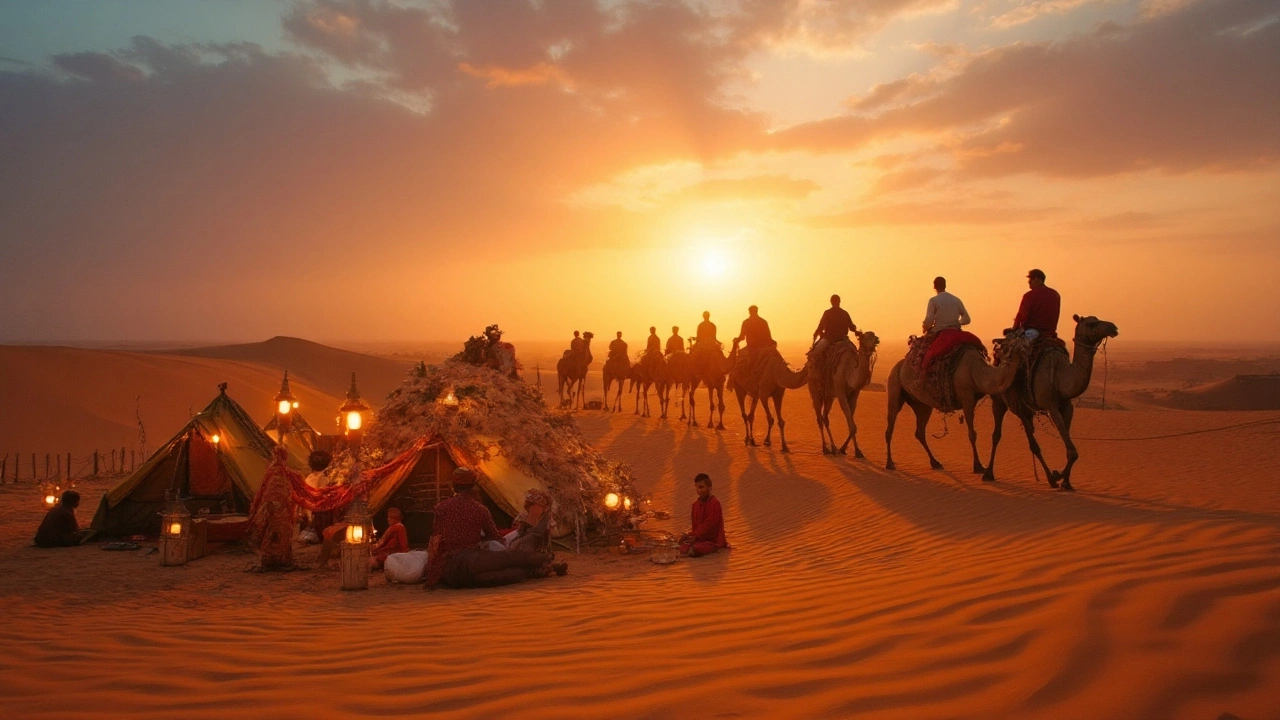
Planning Your Jaisalmer Adventure: Travel Tips and Local Secrets
Visiting the Golden City isn’t just about rolling up with a camera and snapping away at sunlit walls. Travel here is partly an adventure—partly a gentle test of how well you can surrender to the local rhythm. First off, the best season? November through February, when the desert air is pleasantly cool, and you can actually survive a full day outdoors without feeling like you’re melting. If you’re brave enough to visit during the Jaisalmer Desert Festival, you’ll see the city at its wildest: think camel races, turban-tying contests, and the occasional mustache competition judged with alarming seriousness. Pro tip: book accommodations way ahead. The city gets packed, and hotels, especially inside or near the fort, fill up fast.
Getting here isn’t tricky—it’s just slow and scenic. Trains connect Jaisalmer to bigger cities like Jodhpur, Delhi, and Jaipur, with overnight journeys that let you wake up straight in desert territory. If you’re flying, the airport is small and limited, so plan for a drive from the nearest bigger stops.
Once you arrive, you’ll find the city walkable, but don’t skip an auto-rickshaw ride—you haven’t experienced Jaisalmer until you’ve sped through its golden lanes with honking, laughing locals. For the truly adventurous, camel safaris are a must. Picture yourself lumbering across dunes at sunset, with nothing but wind and distant fort lights for company. Spend a night in a desert camp if you can—yes, it’s a little touristy, but what’s travel for if not experiences you’ll never forget?
Packing for Jaisalmer is its own game. The desert may look scorching in the day, but nights get chilly quick. Layers are your best friend: carry a warm scarf or jacket. Comfort trumps style—gravelly streets are known to eat up delicate shoes. And dust? It gets everywhere, so sunglasses and a hat will save you more than you know. Hydrate like your life depends on it, because in a way, it does—a few hours under that sun, and you’ll crave every drop of water. Avoid single-use plastic—lots of guesthouses offer refills for reusable bottles.
If you want to shop local, go during late mornings or evenings. Early morning is for grocers and residents stocking up, so the bazaar energy is a bit off. And while you’re at it, learn a few Rajasthani phrases: “Khamma ghani” for hello, and “Ram ram sa” for good wishes. It wins you quick smiles and possibly a deal or two with local artisans.
Respect the fort—literally. UNESCO and local authorities are constantly urging travelers to avoid polluting and to stay in newer hotels outside the ancient walls, since the population pressure inside is threatening the fort’s foundation. You’ll still get your golden views and can wander the lanes by foot during the day, guilt-free.
Need a random local tip? Try breakfast at a rooftop café inside the fort on your first morning. Watch the city wake up with you, with pigeons darting through the sunlight and the sound of temple bells waking the golden stones. Stash a power bank in your bag—electricity hiccups sometimes happen. If you get overwhelmed by tourist crowds, just wander east toward the back gates of the fort, where local kids play cricket and older residents sip chai, and you’ll taste the real pace of Jaisalmer, unrushed and unbothered.
Don’t leave without taking the pulse of the desert itself. Hire a local guide; their stories can unlock corners and legends you’ll never find in any online review. Camel rides aren’t just for kids—grownups find it equally fun (and a little disconcerting at first). As evening falls, pause at Gadisar Lake, where the light on the water reminds you why the city is called the "Golden City." Want a one-of-a-kind souvenir? Look for antique silver, embroidered bags, or even one of those classic Rajasthani puppets for your home. And before you say goodbye, climb to the fort ramparts for one last look at the golden maze, because if you’re like me, you’ll probably dream of Jaisalmer’s shimmering skyline long after you leave.
